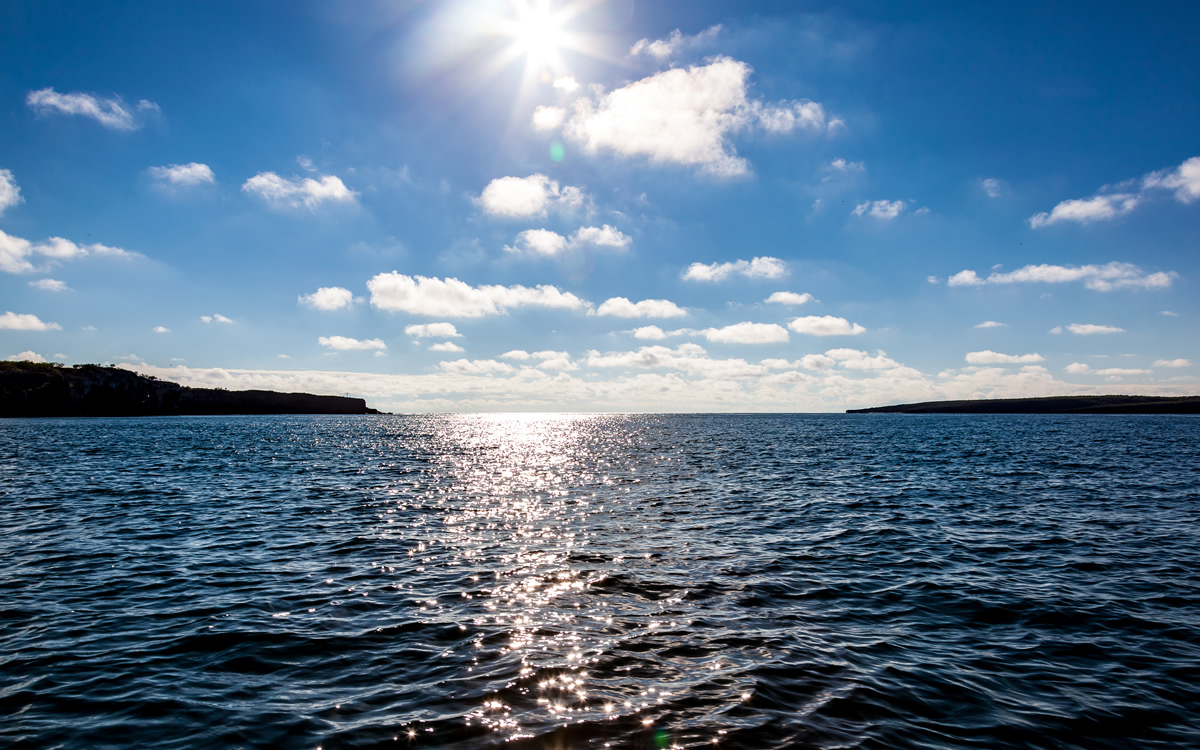El Barranco, also known as "The Canyon," is a breathtaking geological feature located on Española Island, which is part of the Galápagos archipelago in Ecuador. The archipelago is famous worldwide for its unique wildlife, endemic species, and profound influence on Charles Darwin's theory of evolution by natural selection. El Barranco serves as an awe-inspiring testament to the rich natural heritage and ecological diversity of the Galápagos Islands, attracting thousands of nature lovers and scientists from around the globe every year.
Española Island, the southernmost of the Galápagos Islands, is a remote and uninhabited island. Despite its isolation, it plays a crucial role in the natural ecosystem of the archipelago. El Barranco is situated on the northern part of the island and is accessible only by boat. Excursions to the area are typically organized as part of guided tours, which adhere to strict environmental guidelines to preserve the pristine nature of the Galápagos Islands.
The Canyon itself is a dramatic cliff face rising sharply from the sea, carved by eons of geological activity and oceanic erosion. It is composed of layers of volcanic rock, which tell a silent history of the fiery forces that shaped the island. The Canyon's formation has created a unique micro-habitat with its own climatic conditions and species adapted to the precipitous environment. One of its most captivating features is the steep, rocky trail that leads visitors up the sides of the cliff, offering panoramic views of the surrounding ocean and the island.
El Barranco serves as an important nesting site for several species of seabirds. One of the highlights for visitors is the opportunity to observe the famous Galápagos red-footed boobies, which make their homes along the cliff edges. Unlike their blue-footed cousins, red-footed boobies prefer nesting in the trees or shrubs that cling to the rocky outcrops, and The Canyon provides an ideal habitat for these colorful birds. In addition to red-footed boobies, Nazca boobies and magnificent frigatebirds are common sights, soaring gracefully above the cliffs or caring for their young in cliffside nests.
Further enhancing its ecological significance, El Barranco is also the habitat for unique plant species and a key site for land iguanas, which can often be spotted sunbathing on the warm rocks or foraging for food. Visitors may be fortunate enough to encounter the waved albatross, particularly during mating season. These majestic birds, endemic to the Galápagos, often perform their elaborate courtship dances, captivating onlookers with their synchronized movements and bill clacking.
For the intrepid traveler, the descent into El Barranco reveals a world teeming with life against a backdrop of stark, dramatic beauty. The trek to explore the depths of The Canyon requires a reasonable level of fitness, but the rewards are immerse as adventurers are treated to close encounters with unique wildlife and stunning vistas.
Preservation efforts by the Galápagos National Park Directorate and various conservation organizations are ongoing to maintain the ecological integrity of El Barranco. Sustainable tourism practices help ensure that the impact of human visitation is kept to a minimum, preserving the area for future generations to explore and enjoy.
El Barranco epitomizes the distinct and fragile splendor of the Galápagos Islands. It stands not only as a monument to the islands' volcanic past but also as a sanctuary for the rare creatures that have adapted to its extreme conditions. For naturalists, biologists, and eco-tourists, a visit to El Barranco is an unforgettable experience, offering a glimpse into the raw and resilient beauty of nature.
Española Island, the southernmost of the Galápagos Islands, is a remote and uninhabited island. Despite its isolation, it plays a crucial role in the natural ecosystem of the archipelago. El Barranco is situated on the northern part of the island and is accessible only by boat. Excursions to the area are typically organized as part of guided tours, which adhere to strict environmental guidelines to preserve the pristine nature of the Galápagos Islands.
The Canyon itself is a dramatic cliff face rising sharply from the sea, carved by eons of geological activity and oceanic erosion. It is composed of layers of volcanic rock, which tell a silent history of the fiery forces that shaped the island. The Canyon's formation has created a unique micro-habitat with its own climatic conditions and species adapted to the precipitous environment. One of its most captivating features is the steep, rocky trail that leads visitors up the sides of the cliff, offering panoramic views of the surrounding ocean and the island.
El Barranco serves as an important nesting site for several species of seabirds. One of the highlights for visitors is the opportunity to observe the famous Galápagos red-footed boobies, which make their homes along the cliff edges. Unlike their blue-footed cousins, red-footed boobies prefer nesting in the trees or shrubs that cling to the rocky outcrops, and The Canyon provides an ideal habitat for these colorful birds. In addition to red-footed boobies, Nazca boobies and magnificent frigatebirds are common sights, soaring gracefully above the cliffs or caring for their young in cliffside nests.
Further enhancing its ecological significance, El Barranco is also the habitat for unique plant species and a key site for land iguanas, which can often be spotted sunbathing on the warm rocks or foraging for food. Visitors may be fortunate enough to encounter the waved albatross, particularly during mating season. These majestic birds, endemic to the Galápagos, often perform their elaborate courtship dances, captivating onlookers with their synchronized movements and bill clacking.
For the intrepid traveler, the descent into El Barranco reveals a world teeming with life against a backdrop of stark, dramatic beauty. The trek to explore the depths of The Canyon requires a reasonable level of fitness, but the rewards are immerse as adventurers are treated to close encounters with unique wildlife and stunning vistas.
Preservation efforts by the Galápagos National Park Directorate and various conservation organizations are ongoing to maintain the ecological integrity of El Barranco. Sustainable tourism practices help ensure that the impact of human visitation is kept to a minimum, preserving the area for future generations to explore and enjoy.
El Barranco epitomizes the distinct and fragile splendor of the Galápagos Islands. It stands not only as a monument to the islands' volcanic past but also as a sanctuary for the rare creatures that have adapted to its extreme conditions. For naturalists, biologists, and eco-tourists, a visit to El Barranco is an unforgettable experience, offering a glimpse into the raw and resilient beauty of nature.











